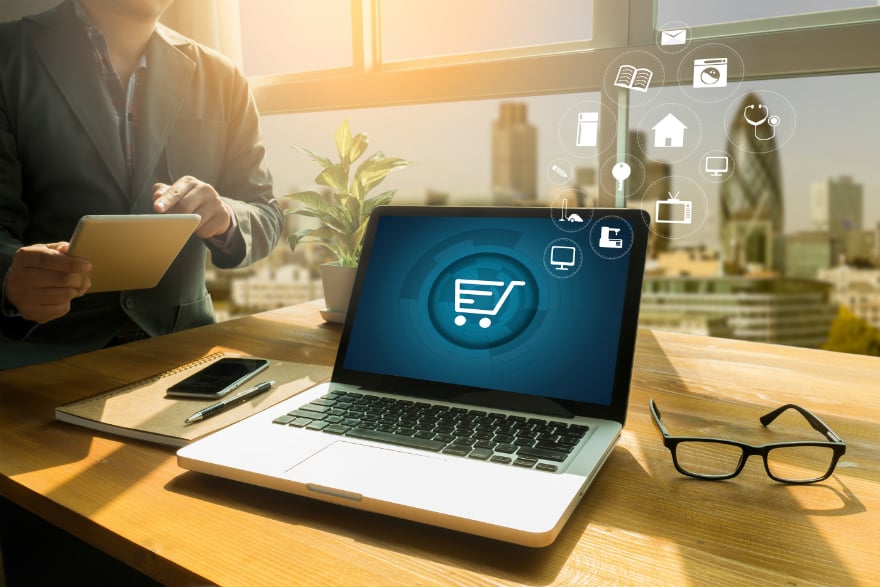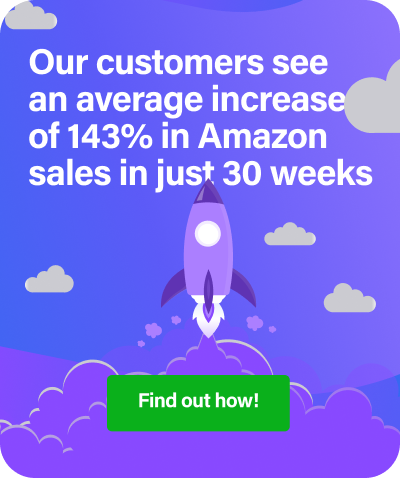Guest post by Lea from Veeqo
Working in ecommerce, you naturally pick up a lot of tricks of the trade. And what good is knowledge if you keep it all to yourself? That’s why I’ve put together this post, summarising some insider tips and tricks that I think are worth passing on to you online retailers out there:
- Sell Internationally
- Go Multichannel
- Nail your Conversion Strategy
- Avoid Oversells
- Master your Pricing
I hope you can take away something useful from this – whether it’s a reminder, refresher or something completely new.
1. Sell Internationally
Cross-border ecommerce is growing rapidly – we all know it. And thanks to today’s technology, retailers have access to international markets of their choosing, quite literally, at their fingertips.
Sell on international marketplaces
The easiest way to get started on establishing an international presence for your brand is to sell on international marketplaces. Amazon and eBay have huge networks of international marketplaces for you to access.
You can list on those directly – Amazon and eBay each operate in 10+ countries, which allows you to sell directly on their international marketplaces, i.e. Amazon.fr, ebay.de, …
Or you could choose to serve international customers without actually listing on international marketplaces. You can do this by enabling the international postage option on your eBay and Amazon listings and then utilise Amazon’s Fulfilled By Amazon (FBA) or eBay’s Global Shipping Programme (GSP) to ship your orders.
- Amazon’s FBA stores your inventory, processes your orders and ships them anywhere in the EU
- eBay’s GSP handles only the shipping process (you post your orders to a UK Shipping Centre, and they take it from there). But this allows you to ship your orders virtually anywhere in the world
Ship to international destinations from your online store
As you well know your online store will have much stronger branding and brand recognition than your marketplace store(s). So if you want to expand internationally, it’s important that you set your ecommerce store up to accept international payments and that you are equipped to ship to international destinations.
Here are a few examples of what this could look like:
- Fulfillment by Amazon: Multichannel Fulfilment. This enables you to utilise the FBA service for your non-Amazon sales channels
- Use a multi-courier platform, such as ParcelBright, that gives you access to discounted international shipping rates
- Ship your international orders via third-party fulfilment providers
2. Turn your Business from Single- to Multichannel
Online retail as an industry is growing at a breath-taking speed. In the UK alone, ecommerce sales grew by nearly 16% last year. And selling multichannel is a trend that is by now impossible to ignore.
Multichannel is the future of ecommerce
Online marketplaces, like eBay and Amazon, currently represent 30% of the online retail market. This is expected to rise to 39% by 2020.
However, it’s been established that shoppers who buy on multiple channels have a 30% higher lifetime value than those who shop on only one channel. When it comes to ecommerce, selling multichannel is a huge opportunity to help you sell more.
There are some amazing ecommerce platforms out there on which you can build your online store – Shopify, Magento, WooCommerce, BigCommerce… to name just a few.
Selling your products on multiple sales channels, of course, means that (hopefully) you will be selling much more of your product. At this stage, it makes sense to invest in a software to help you stay on top of your orders and inventory levels, so that you can focus on the exciting stuff: growing your business.
3. Get Your Conversion Strategy right
There are many smart people and companies out there who specialise in website conversion and optimisation, and I‘ve been fortunate enough to have worked with some of those. So I’m going to highlight a few of the key learnings I picked up along the way.
‘So what is the fuss all about?!’
– you might ask. Conversion strategies essentially help you turn more of your website/webstore visitors into customers – without having to compromise on your prices.
For a decent conversion strategy to work out you need to have clear goals in mind of what it is you want to achieve. A/B testing (and listening to your data!) is key if you want to implement your strategy successfully.
Tools
There are some really interesting tools out there, such as Hotjar – which tracks your visitors’ mouse movement and clicks. This can help you identify why, for example, some of your items don’t sell (maybe visitors can’t find the corresponding page on your site), where people might get stuck or lost on your website, etc.
For more tools check out Growth Marketing Expert Ian Rhodes’ extensive toolbox.
Another big player in this field is Yieldify, who provide a clever piece of software for website optimisation and increasing your average order value. Yieldify’s CEO Jay Radia reveals that by paying close attention to your website visitors’ on-site behaviour you can then target them very accurately with on-site messaging – including the likes of up-sells, cross-sells, limited-time discounts, and so much more – the possibilities are almost endless.
4. Avoid Overselling your Stock (but how?)
A no brainer for any ecommerce retailer, of course. Nonetheless, it happens to way too many online retailers – especially when business really starts taking off and orders are pouring in. I don’t need to explain to you the pains of oversold stock. So, let’s get right down to it.
One approach to solving this problem, if you can afford it, is hiring additional staff to help you manage your workload and take the syncing and updating of stock levels across your different stores off your shoulders. However, this is a fairly dull and mundane task and isn’t the most cost-efficient way to avoid oversells.
Make technology your friend
A far more viable option is to invest in an inventory management system. This is particularly handy for those multichannel retailers among you. These types of software end up saving you hours every day by automating the synchronisation of your inventory levels and streamlining your order management process across all your stores. That way you can focus on growing your business.
Best practices
There’s certainly best practices out there, regardless of whether you’re using a software or not, an important one being regular auditing of your inventory. Whether you do a full annual one, spot checks or cycle counts, it’s important to take stock of your inventory every so often. Using barcode scanners and a software that supports stock takes helps you save a lot of time, especially when your business is of the medium to large variety.
5. Master your Pricing
There are entire volumes of academic journals and endless blog posts out there about the different types and approaches to pricing strategy, so I won’t go into detail here – what I’m going to discuss is actionable tips to put into place quickly and easily.
Let tech do the work for you
50% of online shoppers look for pricing info when they’re looking at your online store.
If you sell on marketplaces like Amazon or eBay, and especially if you compete on price, I’m sure you understand the pains of your competitors continually undercutting your prices ever so slightly. So instead of monitoring and updating your pricing manually – which I’m sure would drive any sane person mad sooner or later – get your hands on a software that will do the hard work for you like RepricerExpress.
In Summary
In this blog post I’ve presented you with five insider tips you can use to sell more and grow your business:
- Sell Internationally
- Go Multichannel
- Nail your Conversion Strategy
- Avoid Oversells
- Master your Pricing
These are by no means the only five options out there, nor are they arranged in any particular order. Every single business is unique, so take and implement from this whatever suits yours. I hope you can take away something useful to gear up your business and take it to the next level.
Happy selling!


